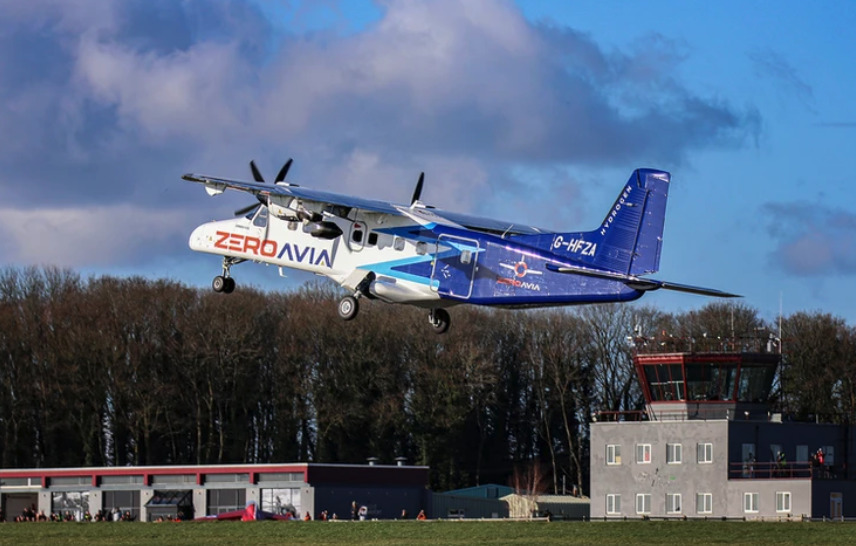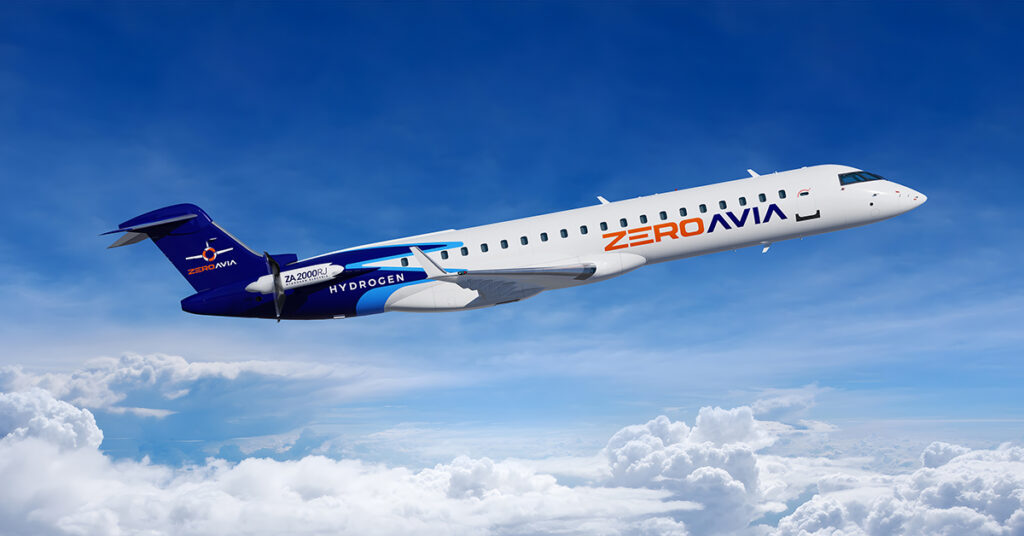Estimated reading time 6 minutes, 58 seconds.
California- and U.K.-based ZeroAvia — which is aiming to replace conventional engines with hydrogen-electric powertrains — made history on Jan. 19 when it flew the largest aircraft in the world to be powered by a hydrogen-electric engine.
The company’s 19-seat Dornier 228 testbed aircraft achieved its maiden flight from ZeroAvia’s research and development (R&D) facility at Cotswold Airport in the U.K., completing “taxi, takeoff, a full pattern circuit, and landing,” a company press release states. The inaugural flight lasted 10 minutes, and “all systems performed as expected,” said ZeroAvia.
The milestone flight marks a major step forward in the HyFlyer II project — an R&D program partially funded by the U.K. government’s Aerospace Technology Institute’s (ATI) program — which is targeting the development of a 600kW hydrogen-electric powertrain that can support nine- to 19-seat aircraft.

ZeroAvia has developed a prototype 600kW hydrogen-electric engine, the ZA600, which has been retrofitted onto the Dornier 228’s left wing and is supported by a single Honeywell TPE-331 stock engine on the right wing. The company is targeting a 300-mile range with the ZA600 engine.
In the testbed configuration, “the hydrogen-electric powertrain comprises two fuel cell stacks, with lithium-ion battery packs providing peak power support during takeoff and adding additional redundancy for safe testing,” the press release reads. “Hydrogen tanks and fuel cell power generation systems were housed inside the cabin,” however, external storage would be utilized in a commercial configuration to allow the seats to be added back into the cabin, the company said.
“The first flight of our 19-seat aircraft shows just how scalable our technology is and highlights the rapid progress of zero-emission propulsion,” said Val Miftakhov, ZeroAvia’s founder and CEO. “This is only the beginning – we are building the future of sustainable, zero climate impact aviation. Our approach is the best solution to accelerate clean aviation at scale.”
The Dornier 228’s first flight with the ZA600 engine marked the largest ZeroAvia engine tested to date. In September 2020, the company completed the first flight of a six-seat Piper Malibu aircraft powered by a 250kW hydrogen-electric engine, and went on to conduct more than 30 test flights. Those flights, in particular, were operated under E Conditions, while the Dornier 228 flight test campaign is being conducted under a full Part 21 flight permit with the U.K. Civil Aviation Authority — which ZeroAvia says is “a much more stringent set of requirements.”
The company added: “This signifies the maturity of [ZeroAvia’s] processes and design approaches and its readiness to proceed towards full commercial certification of its powerplants.”
ZeroAvia said it will begin working towards the certifiable configuration of the ZA600 powertrain, which is “to be finalized and submitted for certification in 2023.” The goal is to operate the technology on commercial routes by 2025.
However, ZeroAvia has further ambitions.

The ZA600/HyFlyer II project will fast-track similar technology development for larger aircraft, the company said. In fact, ZeroAvia has already begun working on a 2-5 MW powertrain program, the ZA2000, that “will scale the clean engine technology for up to 90-seat aircraft.”
In December 2021, the company announced that it had raised a further $35 million to help develop the 2-5 MW powertrain system for regional jets, which included an investment from United Airlines and an order from the airline for 50 ZA2000-RJ engines. The new round brought the company’s total investment up to $115 million.
In August 2022, ZeroAvia received an investment from American Airlines, and signed a memorandum of understanding that will give the airline the opportunity to order up to 100 hydrogen-electric engines.
To date, the company has 1,500 engines on pre-order, as well as partnerships with seven aircraft OEMs. ZeroAvia and De Havilland Canada entered an agreement in December 2021 to develop a line-fit and retrofit program for De Havilland’s aircraft models using hydrogen-electric propulsion.
In September 2022, Textron Aviation agreed to support ZeroAvia with the development of the ZA600 powertrain, which Textron intends to retrofit the Grand Caravan single-engine utility turboprop with.
Over the next decade, ZeroAvia plans to expand the technology into narrowbody aircraft demonstrators.








